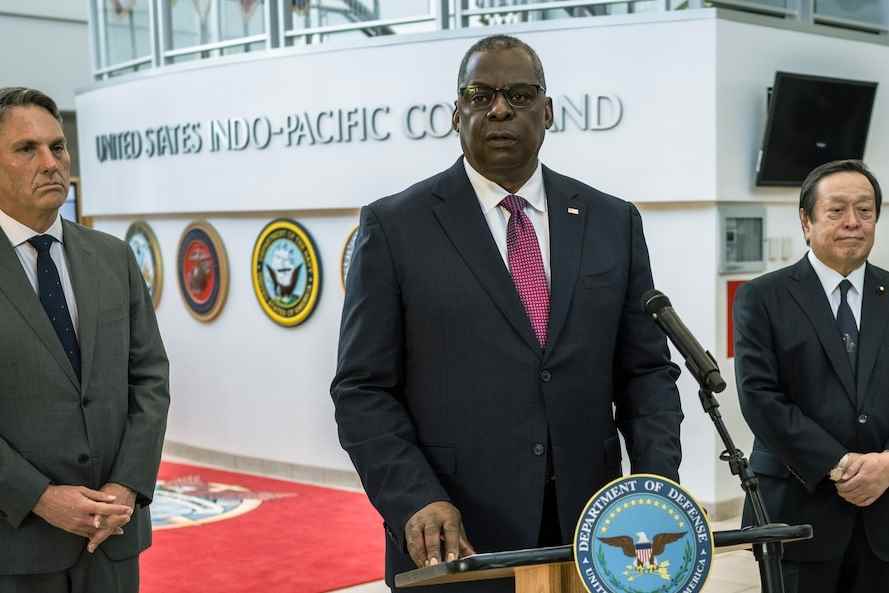(Honolulu) The Ministers and Secretary of Defense of Australia, Japan and the United States pledged on Saturday in Honolulu to strengthen their military cooperation in the face of China’s regional ambitions which seek to “change the status quo by force. ” In the region.
Posted yesterday at 7:17 p.m.
“We are deeply concerned about China’s increasingly aggressive behavior and intimidation in the Taiwan Strait and elsewhere in the region,” Pentagon chief Lloyd Austin said, welcoming his Australian and Japanese counterparts to the headquarters of the Pentagon. US military command in the region.
“Our interests depend on respect for the international order, but we see this order challenged in the region […] by China, which seeks to shape the world around it as we have never seen it before,” added Australian Richard Marles.
Denouncing “the unilateral changes to the status quo by China’s force in the South and East China Sea” as well as the recent missile launches by North Korea, the Japanese Yasukazu Hamada said he wanted to “discuss what we can do […] to strengthen our deterrence and reaction capabilities in the region”.
The United States has launched an all-out diplomatic offensive in recent days to try to counter China’s influence in this strategic region.
They announced on Thursday a new $810 million fund in aid for the South Pacific islands, where they will increase their diplomatic presence.
US Vice President Kamala Harris visited Japan and South Korea last week, where she reaffirmed Washington’s determination to act “without fear or hesitation” across Asia, including in the Strait of Taiwan.
Beijing lays claim to both Taiwan and the narrow stretch of water that separates the island from mainland China, one of the busiest shipping channels in the world.
Kamala Harris also traveled to Seoul and visited the demilitarized zone (DMZ) between the two Koreas, in a trip aimed at underscoring Washington’s “unwavering” commitment to defending South Korea against the North.
Submarine visit
Mr Austin also had a bilateral meeting with his Australian counterpart, centered on the AUKUS agreement reached in 2021 between the United States, Australia and the United Kingdom for the supply of American nuclear-powered submarines to Canberra. or British.
The two men then traveled to the bay of Pearl Harbor, where the Pentagon chief showed Mr. Marles the Virginia-class attack submarine USS Mississippi, the latest generation of US Navy submersibles. .
Recalling that the Australian government will announce in the first half of 2023 which model of submarines it intends to buy after the abrupt termination of a gigantic contract with France, the Australian minister noted that the delivery schedule would be an important factor in the decision of Canberra.
“It will not just be a question of which submarine we choose, but whether it will be fast and whether there will be a gap in our capabilities,” he said during a press conference. recalling that the Australian fleet of submarines was aging.
“It’s critically important, given the strategic situation we face, that there is an evolution in submarine capabilities in Australia between now and when the first submarines arrive,” he said. he added.
Nuclear-powered submarines could allow Australia to operate in a more stealthy and deterrent way vis-à-vis China.
The choice of supplier will have significant economic impact and strategic implications, closely linking the Australian Navy to that of the chosen nation.
